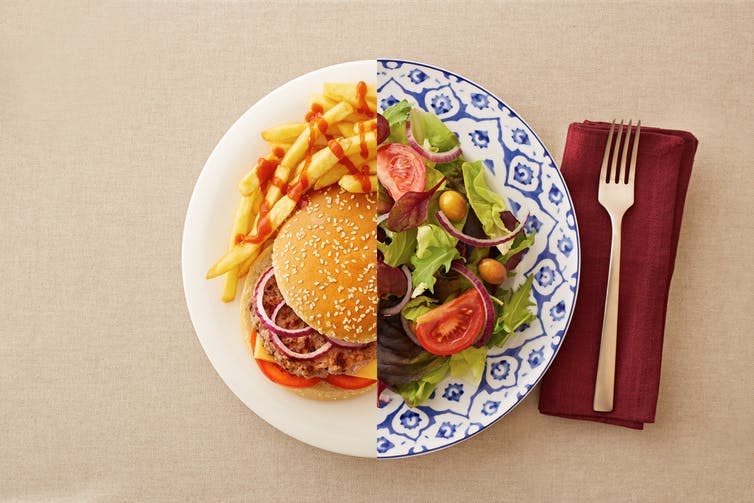Nutritional labelling on menus helps cut the calories we buy

If you knew that the blueberry muffin you had this morning contained 438 calories, would you have thought twice before choosing it to go with your coffee? If calories had been shown on the menu might it have influenced the pizza or pasta you selected for dinner last night?
When Michael Bloomberg was mayor of New York City, he led the way with policies to enforce calorie labelling on menus. Many states followed suit, and this year the labelling will finally become mandatory across the USA for chains with more than 20 outlets. In the UK, around 70% of high street coffee shops, quick-serve restaurants and other chains now label the calorie content of their products too, albeit on a voluntary basis.
It’s easy to support nutritional labelling as a consumer right, to allow people who want this information to make informed choices about what they eat. But it’s been less clear whether labelling actually leads to a reduction in the calories we eat.

Our research review, newly published in the Cochrane Library, sought to establish whether, and by how much, nutritional labels on food or non-alcoholic drinks affect the amount of energy (calories) that people choose to buy, to eat or drink.
Most of the studies available provided information specifically on the number of calories in food and drink. Overall the evidence suggests that if calorie labels were added to menus or put next to food in restaurants, coffee shops and cafeterias, this could reduce calories purchased or eaten by around 8-12% per meal. This was based on three studies in “real world” settings, and eight others that looked at the impact of calorie labels in laboratory settings.
The number of studies of nutritional labelling in these outlets was relatively low for a topic of such interest. But designing high quality studies to test the effect of labelling in the “real world” is challenging. Not least because what is on the menu and what people choose to purchase varies greatly, regardless of the labelling. There are many poor quality studies with inconclusive results which have contributed to the previous uncertainty about the effects of calories on menus. For our review, we rated the quality of the studies and conducted some analyses to tease out the impact of studies that had potential flaws in their methods from those that did not.
Most of the research into labelling has focused on its impact on customer behaviour, but labelling may have wider impacts across the food system. There is preliminary evidence from some studies that new menu items added after the introduction of labelling tend to have a lower calorie content than long-standing menu items. It seems that shining a light on the calorie content of our food might be one way to stimulate changes in the behaviour of our food providers.
Our review suggests there is now sufficient evidence to require food businesses to display calories clearly and prominently at the point where people make decisions about what to buy. Businesses are already required under EU law to hold this information and many provide it on their websites, but the evidence supports the commonsense view that displaying calories clearly and legibly on menus, or adjacent to food and drinks being sold, encourages people to purchase fewer calories.
If we want to help improve health, then we must urge local and national policymakers to legislate on calorie-labelling in coffee shops, cafes and restaurants. It won’t be enough on its own to solve the problem of obesity, but in a world where it’s hard for people to control their weight, we should surely implement those interventions we know to be effective.
This article was originally published on The Conversation. Read the original article.

Susan Jebb receives funding from the University of Oxford, the National Institute for Health Research (NIHR) Oxford Biomedical Research Centre (BRC) and the NIHR Collaboration for Leadership in Applied Health Research and Care at Oxford Health NHS Foundation Trust.
Theresa Marteau receives funding from the Department of Health Policy Research Programme (England), and Wellcome Trust.

 Yahoo News
Yahoo News 